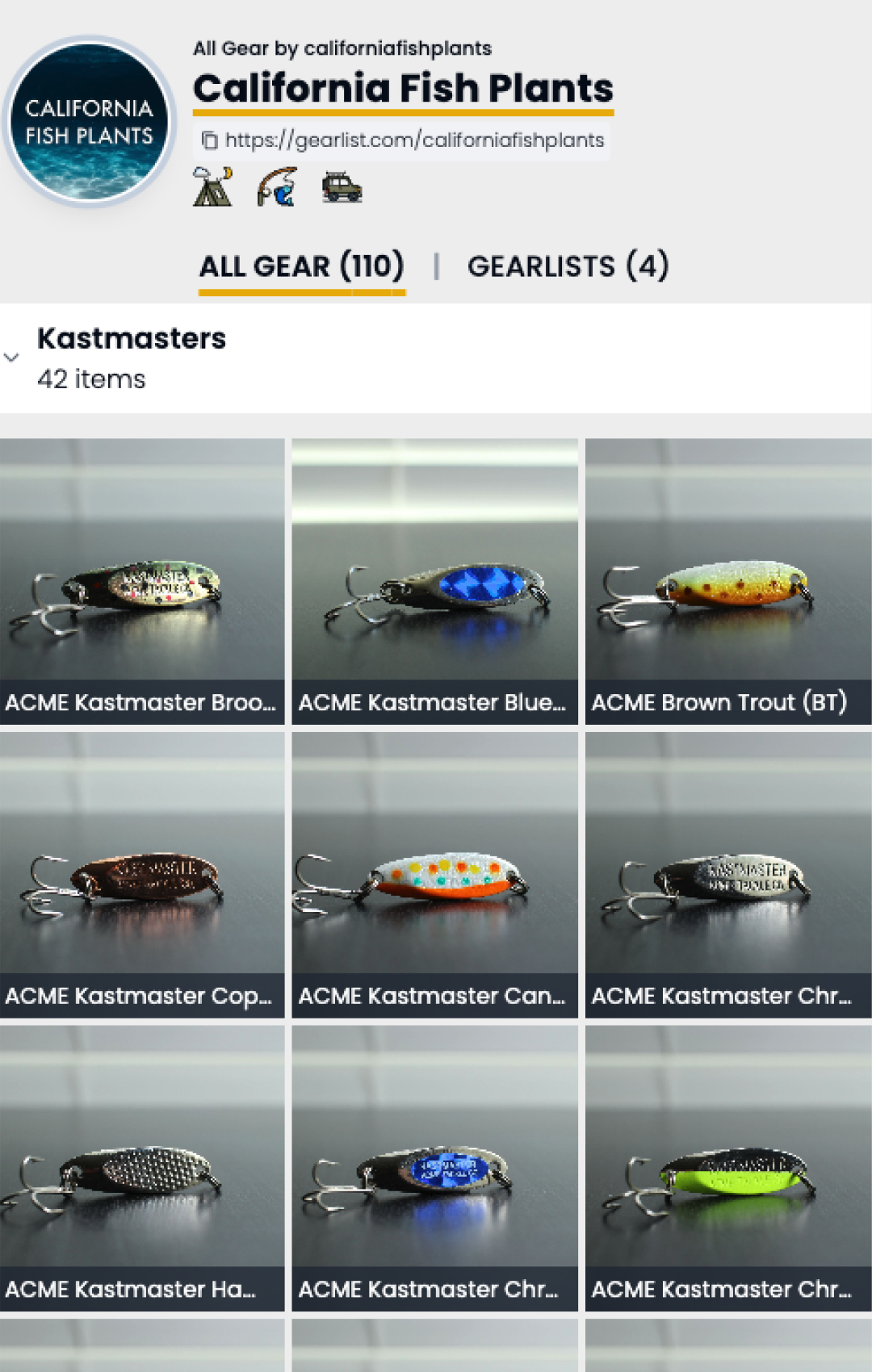Trabuco Creek, nestled in the foothills of the Santa Ana Mountains in Los Angeles and Vicinity, California, might seem like an unassuming stream. But don’t be fooled by its size; this creek packs a punch when it comes to fishing, offering a unique blend of challenge and reward. Here’s what you can expect:
📈 Latest Fish Plants
Fish here often?
How To Read Fish Plant Graphs
To interpret fish plant graphs effectively, consider the following key elements:
- Blue Vertical Bars and Numbers:
- Representation: The blue vertical bars on the graph represent individual fish plants.
- Weight Measurement: The associated numbers indicate the total weight of the plants in pounds (lbs.) that occurred during a specific week.
- Significance: Monitoring these bars helps identify weeks with higher planting activity, aiding anglers in selecting optimal times for fishing near recent plantings.
- Orange Trend Line:
- Purpose: The orange trend line represents the moving average of all fish plant activities at the specified location.
- Indicator of Activity: A rising trend line suggests a consistent increase in planting activity over the designated period. This indicates the potential for more catch opportunities and signifies a growing fish population over the weeks.
- Interpreting the Moving Average:
- Upward Trend: A rising moving average implies an upward trajectory in planting activity, indicating an increasing number of fish being introduced into the area. This suggests a positive outlook for anglers, as it implies a larger and potentially more accessible fish population.
- Downward Trend (Not Specified): The description does not provide information on the interpretation of a decreasing trend in the moving average. It might be beneficial to include information on what a decreasing trend could signify in terms of fishing prospects.
- No Data Present:
- Possible Explanations: If no data is visible on the graph, it may indicate that the location had no fish plants in the last three months. Alternatively, the absence of data could be due to non-disclosure of fish plants for that location.
- Natural Population: Some fishing areas in California rely on the natural growth of fish populations, and graphs may not show plants if this is the case.
- Graph Disclaimer:
- Data Source: The graphs reflect a combination of publicly disclosed data and estimates. Some locations may disclose fish plants without specifying exact amounts.
- Not Universal: Not all fishing areas have fish plants, and the natural growth of fish populations plays a significant role in many California fishing locations.
Understanding these elements will empower anglers to make informed decisions about when and where to fish based on historical fish plant data.
Note: If no data is present in the graph above, this location may not have had any plants the last 3 months, or may not have publicly disclosed plants. Graphs reflect both publicly disclosed data and estimates, as some locations disclose plants, but not exact amount.
🗺️ Map & Fishing Location
Fish you can expect to catch:
- Rainbow Trout:
- The stars of the show, especially during the spring and fall. The creek is regularly stocked with these feisty fighters, and early mornings near riffles and deeper pools are prime times. Lures like spoons, spinners, and flies that mimic insects will get them hooked.
- Largemouth Bass:
- These year-round residents patrol the creek’s edges, hiding in weed beds and under overhanging structures. Jigs, crankbaits, and soft plastics are their weaknesses, especially during the mornings and evenings. Be prepared for acrobatic leaps!
- Smallmouth Bass:
- These scrappy cousins of the largemouth bass add an extra dimension to the bass experience. They’re schooling fish, so finding them can be a puzzle, but the rewards are worth it. Try finesse lures and topwater baits near rocky areas.
- Sunfish and Crappie:
- These panfish love the slow-moving sections and shallows near vegetation. Worms and small jigs are their irresistible invitations for a tug-of-war. Kids will have a blast reeling these feisty friends in.
- Bonus Beauties:
- Keep an eye out for the occasional carp or even the rare native arroyo chub. They add an element of excitement and surprise to your catch.
Locals’ Insights:
- Early Mornings are Golden:
- The first hour after sunrise and the last hour before sunset are magic, especially for trout and bass. Match the hatch for fly fishing, and use live bait for sunfish and crappie.
- Light Tackle is Key:
- This is a small creek, so finesse your approach. Lighter lines and smaller lures will help you cast accurately and avoid spooking the fish.
- Be Prepared for Snags:
- The creek has its share of rocks and logs, so bring extra tackle and practice your lure retrieval skills.
- Pack for All Weather:
- The weather can change quickly in the mountains, so bring layers, sunscreen, and rain gear just in case.
Unique to Trabuco Creek:
- Hidden Oasis:
- Despite its proximity to the city, the creek offers a serene escape with towering trees, diverse wildlife, and the sound of rushing water. Breathe in the fresh air and soak in the views while you fish.
- Historical Significance:
- This area was once home to the indigenous Tongva people. Imagine casting your line where they once fished and hunted.
- Challenge Accepted:
- This creek requires patience, skill, and the right approach. But the feeling of landing a fish in these tight quarters is unmatched.
Top Fishing Spots (Specifics may depend on your target species):
- Upper Reaches:
- Perfect for fly fishing for trout near riffles and pools. Look for hatches of insects and cast accordingly.
- Middle Sections:
- Ideal for bass fishing with lures and jigs around rocky areas and submerged trees.
- Lower Stretches:
- Enjoy the slower pace and target sunfish and crappie near vegetation and shallows.
- Creek Mouth:
- Cast your line into the larger pool where the creek meets the reservoir. You might encounter unexpected fish like catfish or even a stray bass.
Bonus Tip:
- Be mindful of private property and respect the natural environment. Practice catch-and-release for trout (except during designated catch days), dispose of trash properly, and be aware of potential seasonal closures.
Trabuco Creek is more than just a fishing spot; it’s a journey into nature, history, and the thrill of the catch. So pack your sense of adventure, grab your rod, and cast your line into an experience that’s as unique as the fish you might reel in.



